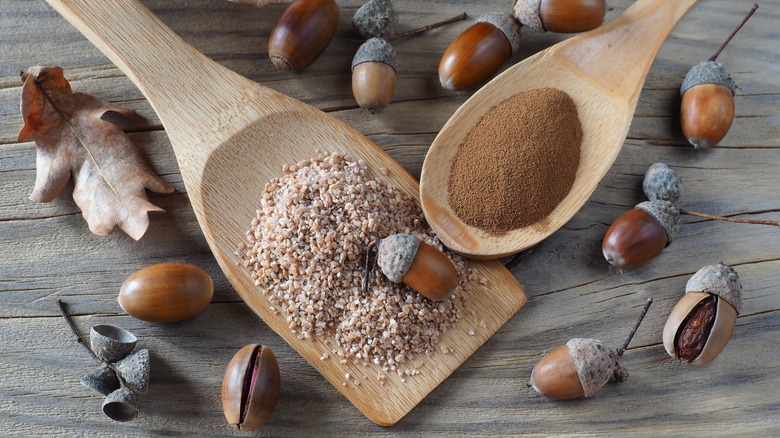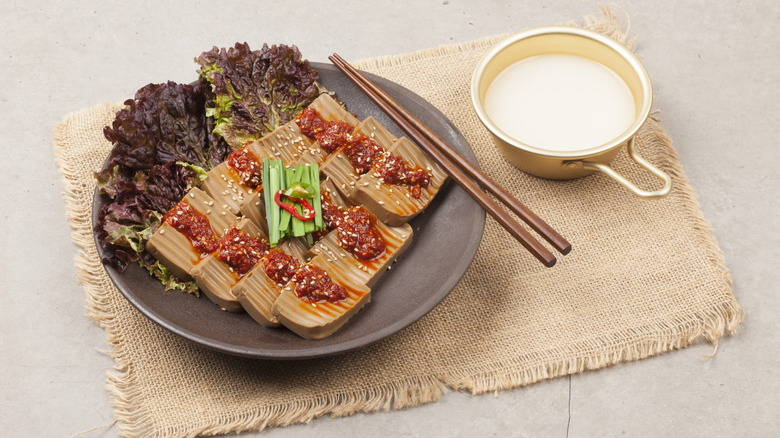Why Don't More People Eat Acorns?
When I lived in Pennsylvania, our property was full of oak trees, which, of course, produce acorns. Thousands of these nuts dropped every year, to the delight of the many deer and squirrels that walked through our yard and bounced from tree to tree, greedily eating them up. For them, acorns were an important and plentiful food resource. For my family and me, they were simply part of the landscape. But, as it turns out, acorns are nutritious and surprisingly useful ingredients, even for humans. However, they are largely left out of the holiday nut bowl because preparing them for consumption requires a lot of time and patience.
You don't just want to crack open an acorn and eat it – this can actually be hazardous to your health. Acorns contain high levels of tannins (the same element that makes wine dry), which make them taste bitter or sour in their natural state, but also can be toxic if they are eaten in high quantities. To remove the tannins from acorns, you first must crack the shells open and pry out the nuts. Once removed, the acorns need to be leached with water, which can take a couple of different forms. You can boil the acorns in several changes of water until the liquid turns from brown to clear. Cold-water leaching also works, but takes longer. Once fully leached, the acorns need to be dehydrated, and finally, either stored whole or ground into a flour-type meal. Alternatively, you can grind the acorns first and then water-leach the meal.
With any method, you're looking at a time commitment; however, for those who enjoy foraging, eating locally, or living off the land as much as possible, preparing your own acorns can be an exciting endeavor.
People have been eating acorns for thousands of years
Historically, humans have been eating acorns for a long time. They have been a staple in Native American cuisine, particularly among California-based tribes, and there are references to the edible nut in Greek and Assyrian history. Today, acorns are also popular in Korean cuisine, where they are commonly made into acorn jelly. The good news is that if you want to experiment with acorn flour or meal, you don't necessarily have to forage, leach, dry, and grind it yourself; you can order it through specialty suppliers, such as health food stores, some farmers' markets, and online sources. If you decide to prepare your own, there are some excellent dehydrators available for under $100.
Many recipes call for substituting a portion of wheat flour with acorn flour to make items such as bread, pancakes, pasta, cakes, and cookies. Acorns can also be simply roasted and salted for a tasty snack, made into coffee, and used in desserts that call for nuts. With a flavor often described as earthy, nutty, and slightly sweet, acorns and acorn flour can be a welcome and unique addition to your kitchen pantry. They are also nutritious once the tannins are leached from them; acorns are rich in antioxidants and heart-healthy omega-3 fatty acids. All in all, acorns are a nut you should consider eating.

